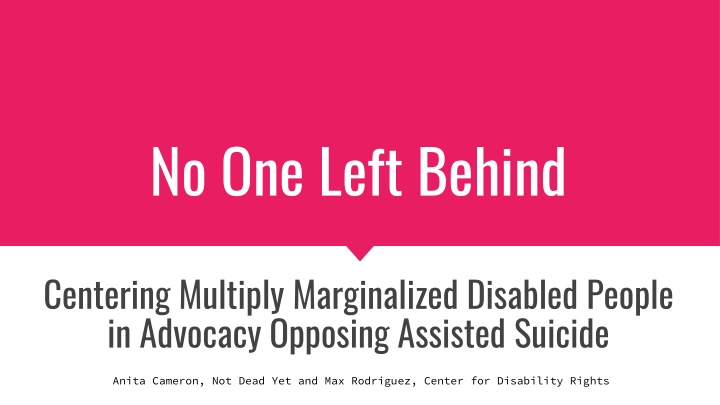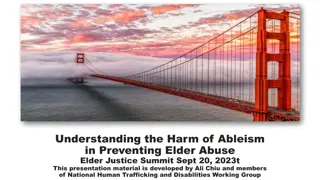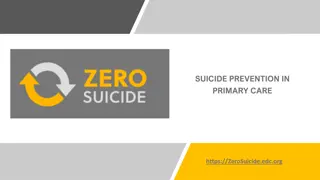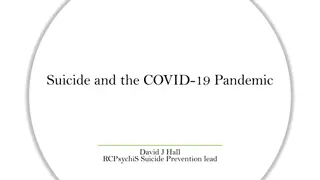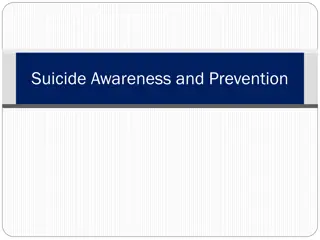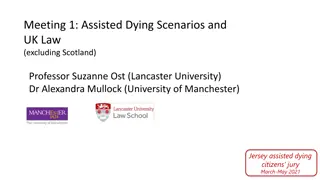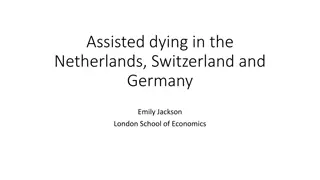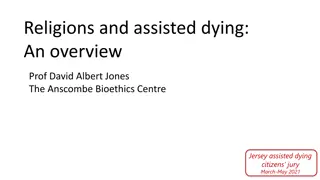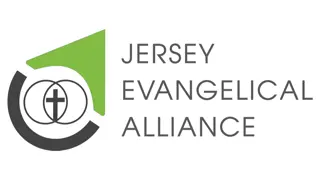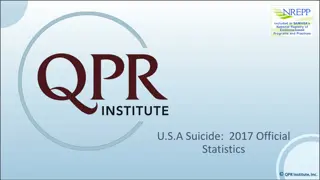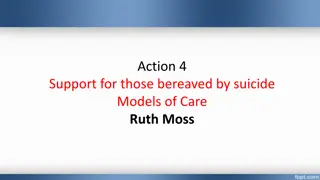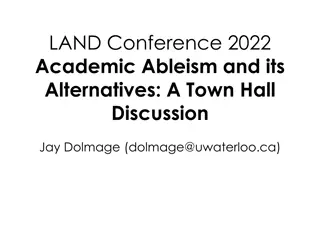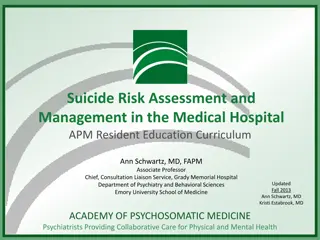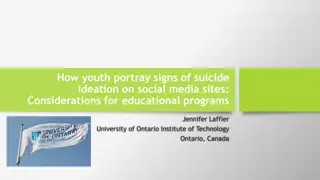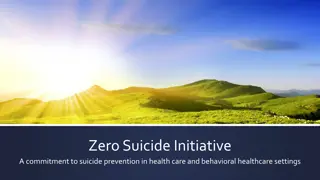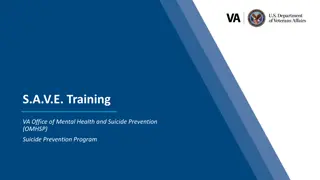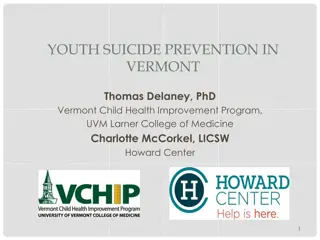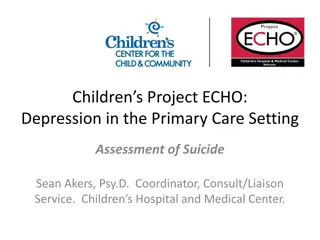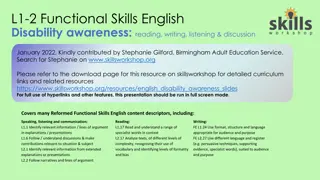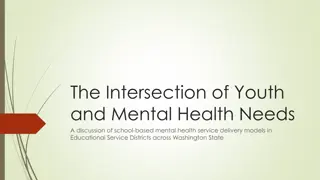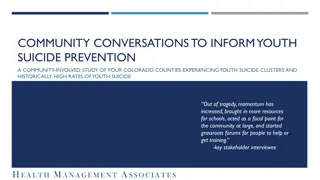Uncovering Structural Ableism in Advocacy Against Assisted Suicide
Explore the advocacy work of Anita Cameron and Max Rodriguez from the Center for Disability Rights, highlighting the impact of ableism and medical discrimination. Learn about the concept of ableism, its societal implications, and how marginalized disabled individuals face unique challenges due to predefined norms. Delve into the discussion on assisted suicide, its legalization status in various states, and its intersection with structural ableism. Source valuable insights from reputable organizations like KFF and the Commonwealth Fund to deepen your understanding.
Download Presentation

Please find below an Image/Link to download the presentation.
The content on the website is provided AS IS for your information and personal use only. It may not be sold, licensed, or shared on other websites without obtaining consent from the author.If you encounter any issues during the download, it is possible that the publisher has removed the file from their server.
You are allowed to download the files provided on this website for personal or commercial use, subject to the condition that they are used lawfully. All files are the property of their respective owners.
The content on the website is provided AS IS for your information and personal use only. It may not be sold, licensed, or shared on other websites without obtaining consent from the author.
E N D
Presentation Transcript
No One Left Behind Centering Multiply Marginalized Disabled People in Advocacy Opposing Assisted Suicide Anita Cameron, Not Dead Yet and Max Rodriguez, Center for Disability Rights
Who Are We? Anita Cameron, Director of Minority Outreach Max Rodriguez, Manager of Government Affairs, Center for Disability Rights
What is Ableism? "A system of assigning value to people's bodies and minds based on societally constructed ideas of normalcy, productivity, desirability, intelligence, excellence, and fitness. These constructed ideas are deeply rooted in eugenics, anti-Blackness, misogyny, colonialism, imperialism, and capitalism. This systemic oppression that leads to people and society determining people's value based on their culture, age, language, appearance, religion, birth or living place, "health/wellness", and/or their ability to satisfactorily re/produce, "excel" and "behave." You do not have to be disabled to experience ableism." -T.L Lewis et al, 2022
Breaking It Down Accepted standards of what is normal and acceptable have historically been set by white, cishet, abled, wealthy men The further you are away from those descriptors, the harder it is to access resources and care Disabled people with other marginalizations, esp racialized disabled people, face unique challenges
Assisted Suicide 101 A medical professional prescribes lethal medication to a person who has been diagnosed as terminal with a <6 month prognosis Legal in: OR, WA, DC, NJ, NM, MT, VT, ME, HI, CA, CO States with legalization bills this year: CT, MA, PA, FL, MN, IN, RI, NV, IA, NY
Why Do We Oppose Assisted Suicide? Insurers denying or delaying treatment but approving assisted suicide means people will die needlessly Prognostics are not an exact science Double standard in mental health care: suicidality among disabled people deemed rational and inevitable, but seen for the tragedy it is among nondisabled people Non-terminal people can become terminal without access to proper care In a healthcare system with so many clear barriers for marginalized peoples, a policy of assisted suicide is inherently dangerous.
Why Do People Pursue Assisted Suicide? Top 5 reasons are all about dealing with the stigma of disability and facing inadequate support This is preventable!
Common Misconceptions Assisted suicide/ medical aid in dying isn t suicide Proponents avoid the word suicide because of the stigma it carries Active choice to end your own life=suicide; important to clarify, esp. When discussing the double standard in mental health care Without assisted suicide, people will die in pain Many other options; we advocate for high-quality EOL care Safeguards in bills prevent abuse and coercion DREDF has documented many cases of abuse and coercion Safeguards are near impossible to enforce No safeguard can undo the dangers of our broken health care system
Individual Freedom and Community Safety: We CAN Have Both! Autonomy for just a privileged few is not true autonomy EVERYONE should have access to high quality health care, especially at the end of life, so that assisted suicide does not seem like the only/best option How can we promote true freedom? Fund HCBS Dismantle the better dead than disabled mindset Make our communities accessible
The Current Policy Landscape A995A(MA Paulin)/S2445A(Sen. Hoylman- Sigal) 63 Assembly sponsors and 20 Senate sponsors, both health chairs, support the bill Court case updates
Meeting with Your Legislators One of the most effective tools! In person, Zoom, or on the phone Tie into other policy priorities, esp ones important for reelection Why is this issue important to you, the region they represent, and the state? Follow up with an email summarizing your conversation
Working with Media Op-Eds Usually 600-750 words, depending on the publication Tell a story supported by facts the narrative and emotional impact is what people remember So what? Letter to the Editor (LTEs) Usually capped at 250 words Who are you, what is your position, and why should we care? Look out for published pieces to write letters in response to News monitoring turn on alerts!
Connecting with Your Community on Assisted Suicide Social media Follow us @NotDeadYetUSA/@CDRNYS on Twitter, Not Dead Yet/Center for Disability Rights on FB Post news articles and research Tough conversations Affirm big feelings and gently push back That sounds really hard. I understand why you feel that way, but Tell your story and uplift others !
